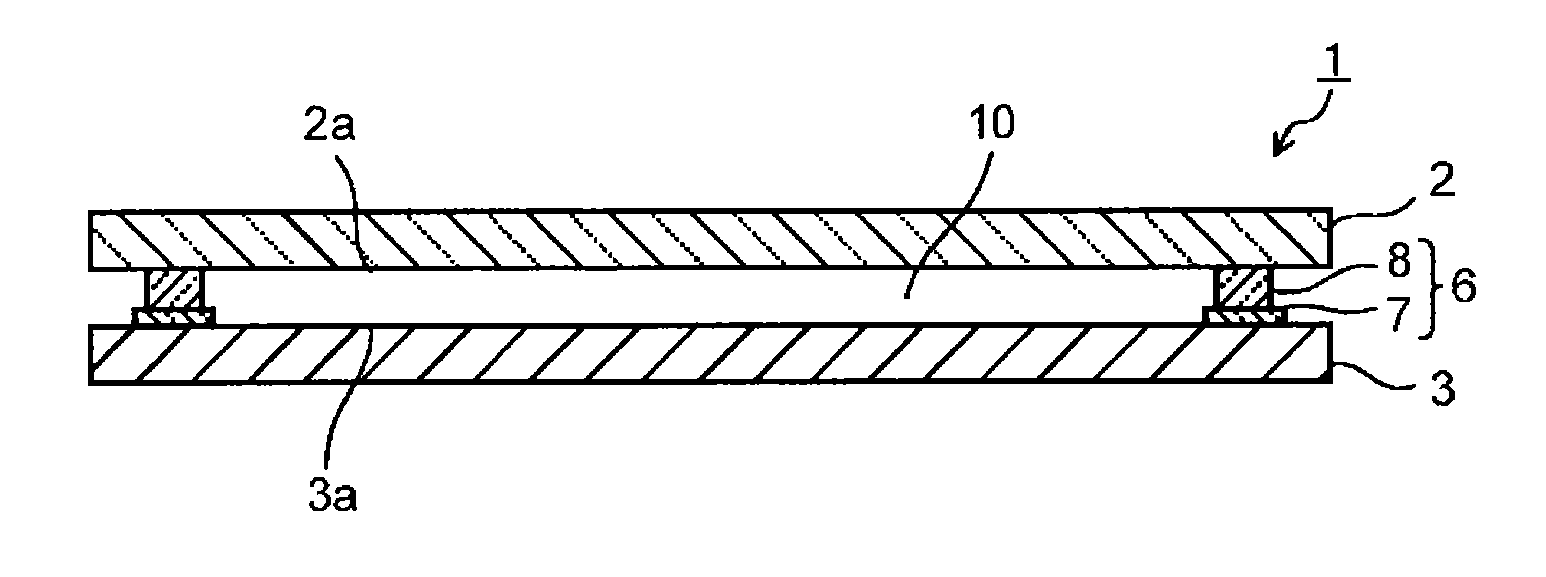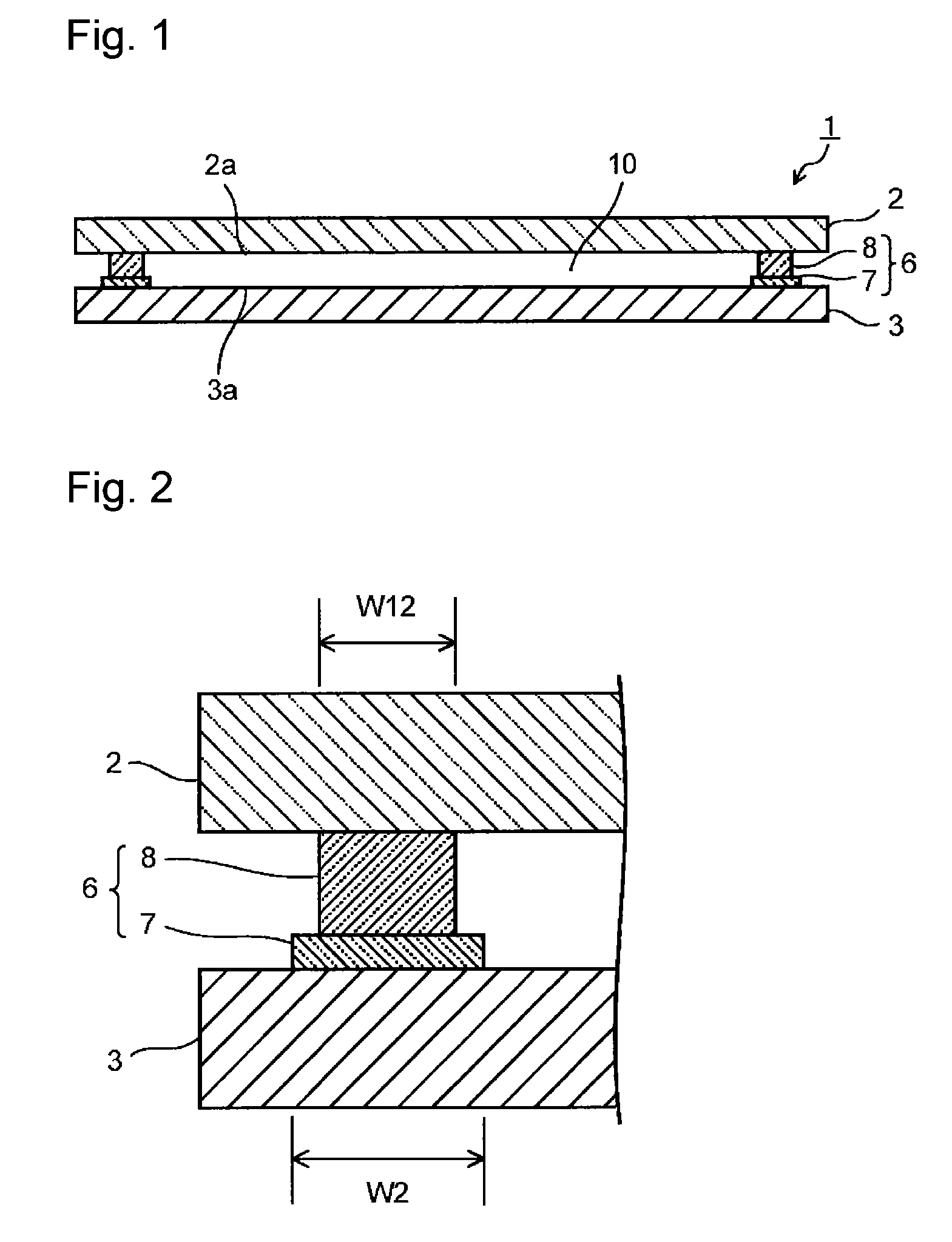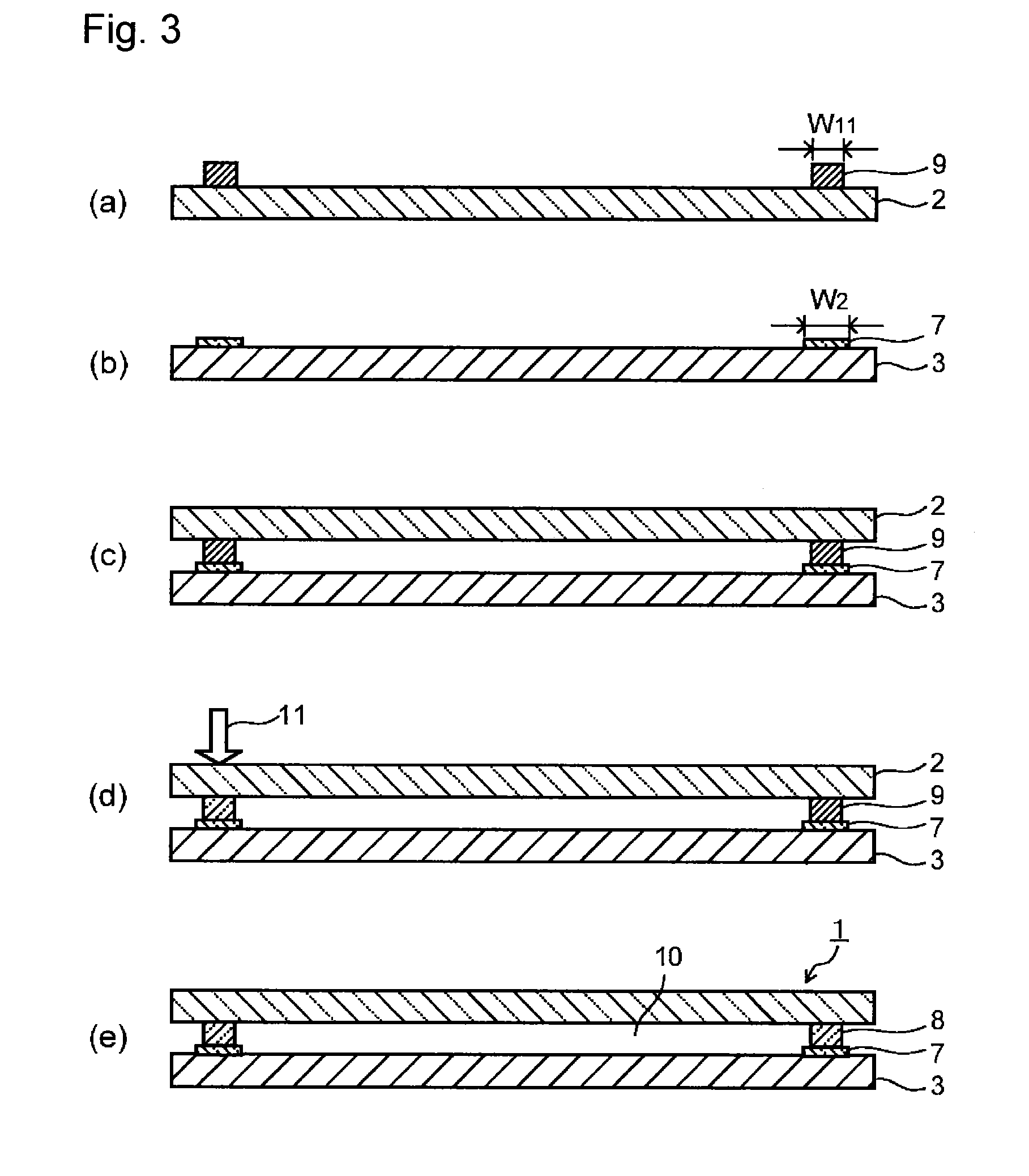Airtight member and its production process
a technology of airtight parts and production processes, applied in the direction of layered products, doors/windows, chemistry apparatuses and processes, etc., can solve the problems of substrate reliability, strength decline at the sealing portion between glass substrates, etc., and achieve good reproducibility and reliability, the effect of increasing reliability
- Summary
- Abstract
- Description
- Claims
- Application Information
AI Technical Summary
Benefits of technology
Problems solved by technology
Method used
Image
Examples
example 1
[0062]First, bismuth glass frit (softening point: 410° C.) having a composition, as calculated as oxides, 83 mass % of Bi2O3, 5 mass % of B2O3, 11 mass % of ZnO and 1 mass % of Al2O3, and having an average particle size (D50) of 1.0 μm, a cordierite powder having an average particle size (D50) of 0.9 μm as a low expansion filler, and a laser absorber having a composition of Fe2O3—Al2O3—MnO—CuO and having an average particle size (D50) of 0.8 μm, were prepared. The average particle size was measured by using a laser diffraction / scattering particle size measuring apparatus (Microtrac HRA manufactured by NIKKISO CO., LTD.).
[0063]67.0 vol % of the bismuth glass frit, 19.1 vol % of the cordierite powder and 13.9 vol % of the laser absorber were mixed to prepare a glass material for sealing for a sealing material layer (hereinafter this will be referred to as low-melting glass material 1). Then, 80 mass % of the glass material for sealing and 20 mass % of a vehicle were mixed to prepare a...
examples 2 to 7
[0069]An airtight member was prepared in the same manner as in Example 1 except that the glass material for sealing, the glass material for forming a glass layer and the highly thermally conductive substrate as identified in Table 1 or 2 were used, and the conditions for producing the glass layer and the laser irradiation conditions as identified in Table 1 were employed. The outer appearance test and the airtightness test for the obtained airtight member were carried out in the same manner as in Example 1. The results are shown in Table 1.
[0070]In Table 1, the glass material 3 for forming a glass layer comprises glass frit having a composition comprising 55 mass % of SiO2, 3 mass % of B2O3, 11 mass % of CaO, 18 mass % of SrO, 10.5 mass % of BaO, 0.5 mass % of Na2O and 2 mass % of ZrO2, and contains no other filler. Further, the glass material 4 for forming a glass layer comprises glass frit having a composition comprising 27 mass % of SiO2, 9 mass % of B2O3 and 64 mass % of PbO, an...
PUM
| Property | Measurement | Unit |
|---|---|---|
| thickness | aaaaa | aaaaa |
| arithmetic mean roughness | aaaaa | aaaaa |
| coefficient of thermal conductivity | aaaaa | aaaaa |
Abstract
Description
Claims
Application Information
 Login to View More
Login to View More - R&D
- Intellectual Property
- Life Sciences
- Materials
- Tech Scout
- Unparalleled Data Quality
- Higher Quality Content
- 60% Fewer Hallucinations
Browse by: Latest US Patents, China's latest patents, Technical Efficacy Thesaurus, Application Domain, Technology Topic, Popular Technical Reports.
© 2025 PatSnap. All rights reserved.Legal|Privacy policy|Modern Slavery Act Transparency Statement|Sitemap|About US| Contact US: help@patsnap.com



